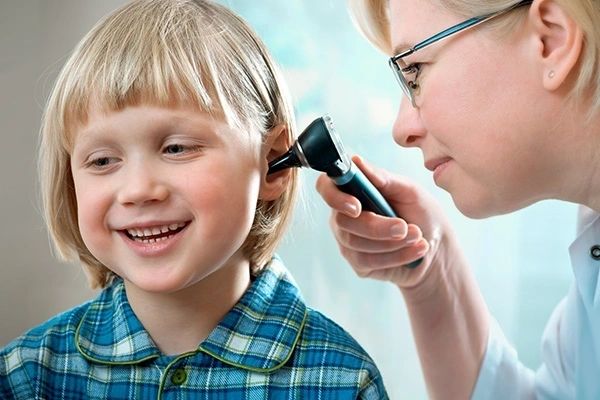Clinical Practice Guideline: Otitis Media w/ Effusion (Glue Ear)

Clinical Practice Guideline: Otitis Media w/ Effusion (Glue Ear)
This is a continuation of series 1. Click here to read series 1
Series 2

Identifying At-risk Children
Those at risk of developmental delay are less likely to tolerate the discomfort of glue ear and behavioural problems may be a factor in glue ear. The earlier the child has access to sound via hearing instruments or successful surgical intervention, the less impact their hearing loss will have on their behaviour, auditory and speech development. Monitoring for glue ear should be repeated 12-18 months after initial diagnosis. You can book hearing tests for children London clinics.
Screening Healthy Children
The group also considers the evidence against interventions such as in the case of screening children without a suspected or reported earache, hearing loss, or balance problem. Other children that may be excluded from screening are those on target academically and behaviourally. The clinician should use their own judgement as to what constitutes as healthy such that they may initiate the screening of a child who has a family history of glue ear, or someone who they may deem as high-risk but without a formal diagnosis or concern.
Parental Education
Counselling of caregivers should be provided in jargon-free ways to reduce anxiety around testing, results, and prognosis. This can empower families in decision making and engagement. You can book hearing tests for children London clinics.
Watchful Waiting
The evidence quality to support watchful waiting is high except where at-risk children have been identified. Those who are high-risk may be offered grommets (a tube surgically implanted in the eardrum to drain fluid from the middle ear), prior to a chronic glue ear diagnosis. Watchful waiting should last 3 months from the day of reported otological problems or from the day of an in-clinic diagnosis if the date of onset is unknown.
Steroids, Antibiotics and Antihistamines
Medications are strongly advised against due to the risk of complications and lack of evidence to support their efficacy. The benefits are short term but where a patient presents with other comorbidities such as an ear infection or adenoiditis, the use of these medications is valid.
Hearing Test
The hearing threshold assessment validates the type of counselling given as this is a measurable variable outcome. The hearing involvement is usually corelated to how intrusive the glue ear is. Chronic sufferers and all at-risk children should have a hearing test if glue ear is suspected or diagnosed. The impact of hearing loss may also determine the need for grommets (a tube surgically implanted in the eardrum to drain fluid from the middle ear).

Speech and Language
There are a number of observational studies regarding the impact of mild, fluctuating and unilateral hearing loss. These grade C studies support the importance of raising awareness for caregivers around how hearing in glue ear affect speech development as well as its impact on the development of the auditory system.
To be continued..
